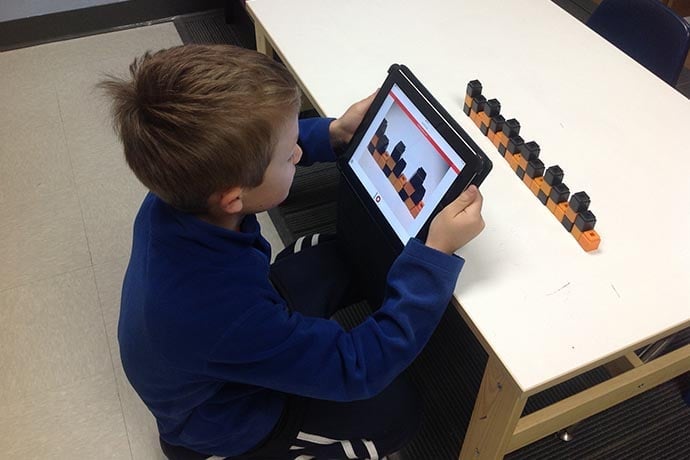Seesaw helps kids as young as kindergarten to explore, learn, document, and discuss what they’ve learned with photos, video, and audio. Teachers and students can share work within a class, as well as parents with an invitation link sent when teachers approve student work.
Seesaw is a software application to create and organize student work. While one obvious use is for kindergartners to save their artwork to amaze teachers, classmates, and parents, Seesaw has many uses. For example, students can annotate their work with text, video, and audio. Students can label photos, for example, the parts of a plant, or add labels. Book reviews also work with Seesaw. Students can photograph their highlighted sections of a book, add commentary, and respond to comments left by others.
Kara Brem, a fourth grade teacher in Cary, North Carolina, has used Seesaw in her classroom for the past year and a half. The greatest benefit, in her experience, is a way for her students to share and choose what to share. It gives students a voice and choices. Parent involvement through Seesaw also has been greater than any classroom visits. And Seesaw embeds digital citizenship, how to behave and act online, into everyday classroom activities.
Kara also noticed one of her quiet students, a student in the special education program, became very active and interested in her Seesaw class work. It helped bring this student out by giving them a safe way to engage the material and classmates.
Also interesting is that Seesaw can translate over 50 languages. One of Kara’s most active parents used their smartphone to view their child’s work and commented in Spanish.
While Seesaw is a relatively new application, about two years old, Kara has noticed the software developers have added lots of features requested by teachers. For example, a tool to draw has evolved to include the ability to annotate the drawing with audio. The Seesaw staff also survey teachers on a regular basis to understand how their software is used and how to improve it further.
Throughout the school year students and parents have the ability to download and preserve student work. And Seesaw sends an email at the end of the school year with a link to download all student work completed during the year.
Overall, the Seesaw application ties together common technology — photos, video, audio — to support learning and learning communities.
Kara Brem, the fourth grade teacher, has found the software is not yet another tool to learn. It helps her students accomplish so many things, for example, parent involvmenet, student growth over time, digital citizenship, and most of all a way for students to have a voice and choices about how to express themselves. She also doesn’t have to take time out to teach how to use Seesaw. Her students figured it out quickly.
Learn More
Seesaw
https://seesaw.me
https://help.seesaw.me/hc/en-us

